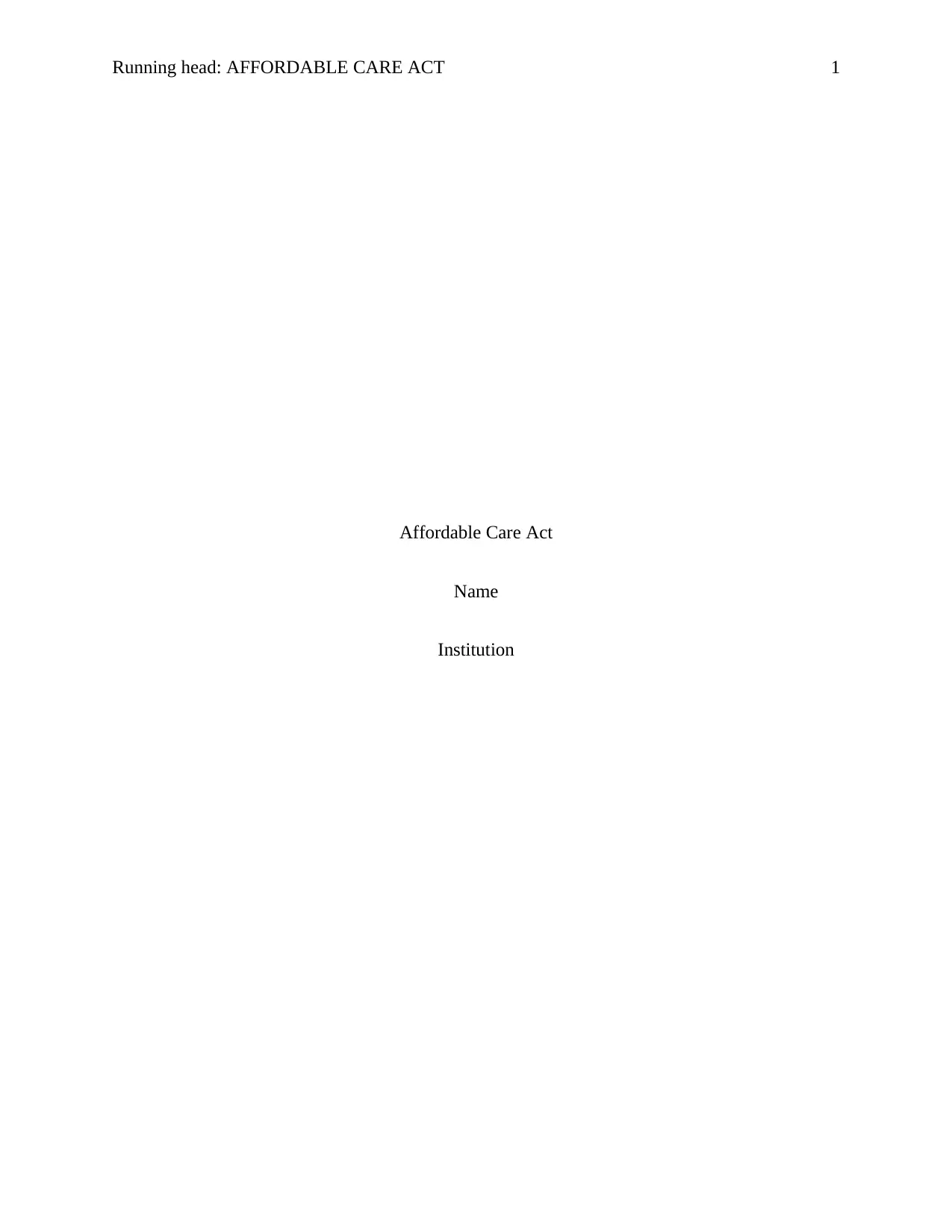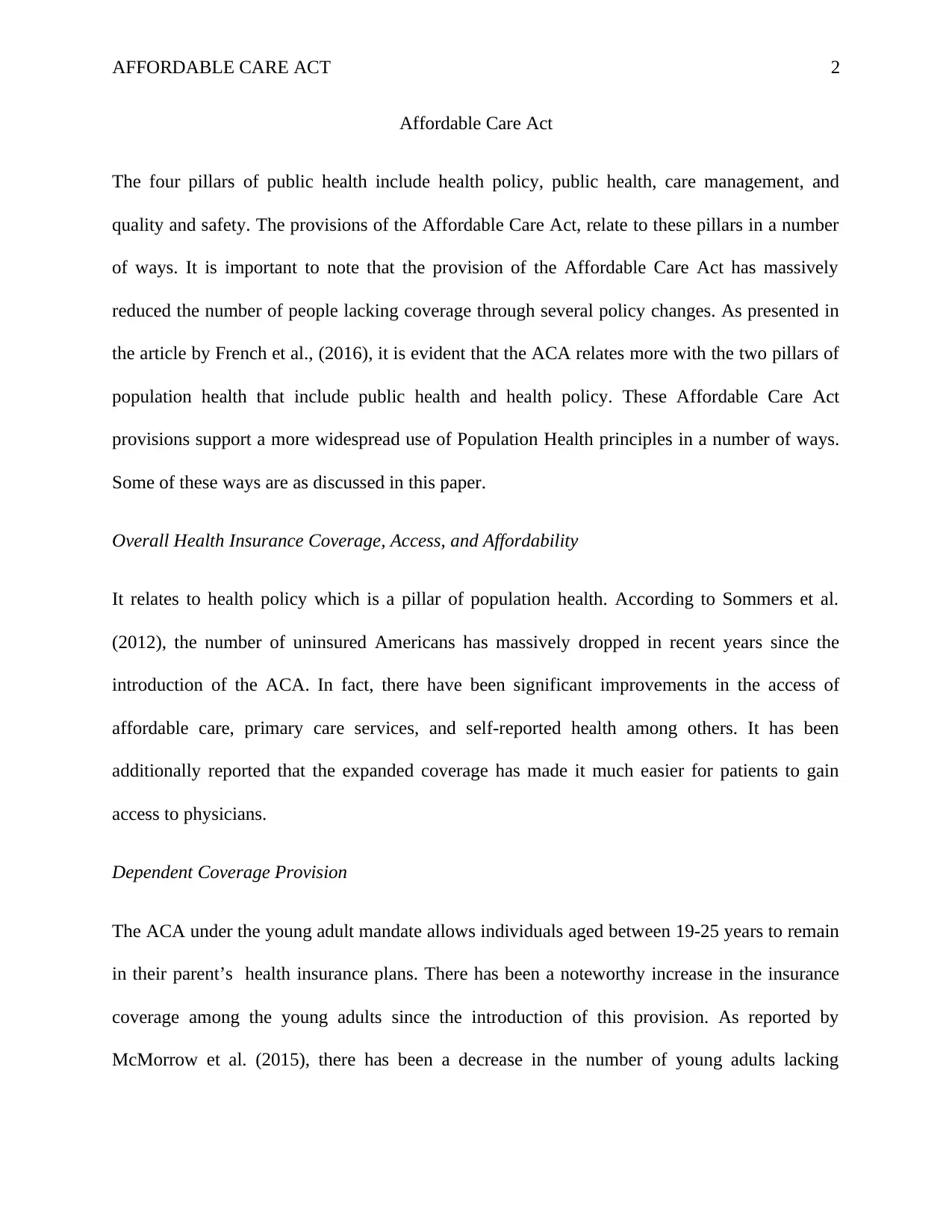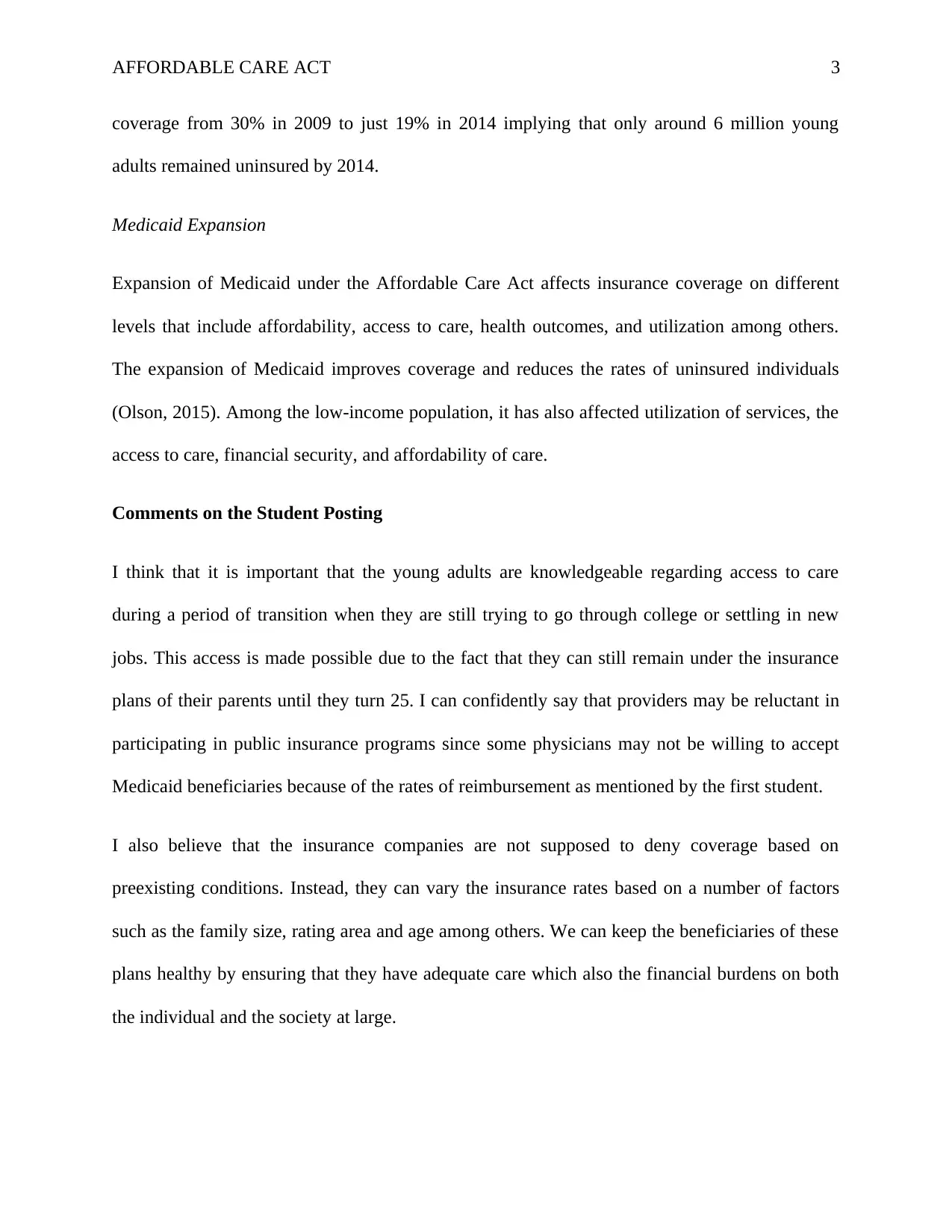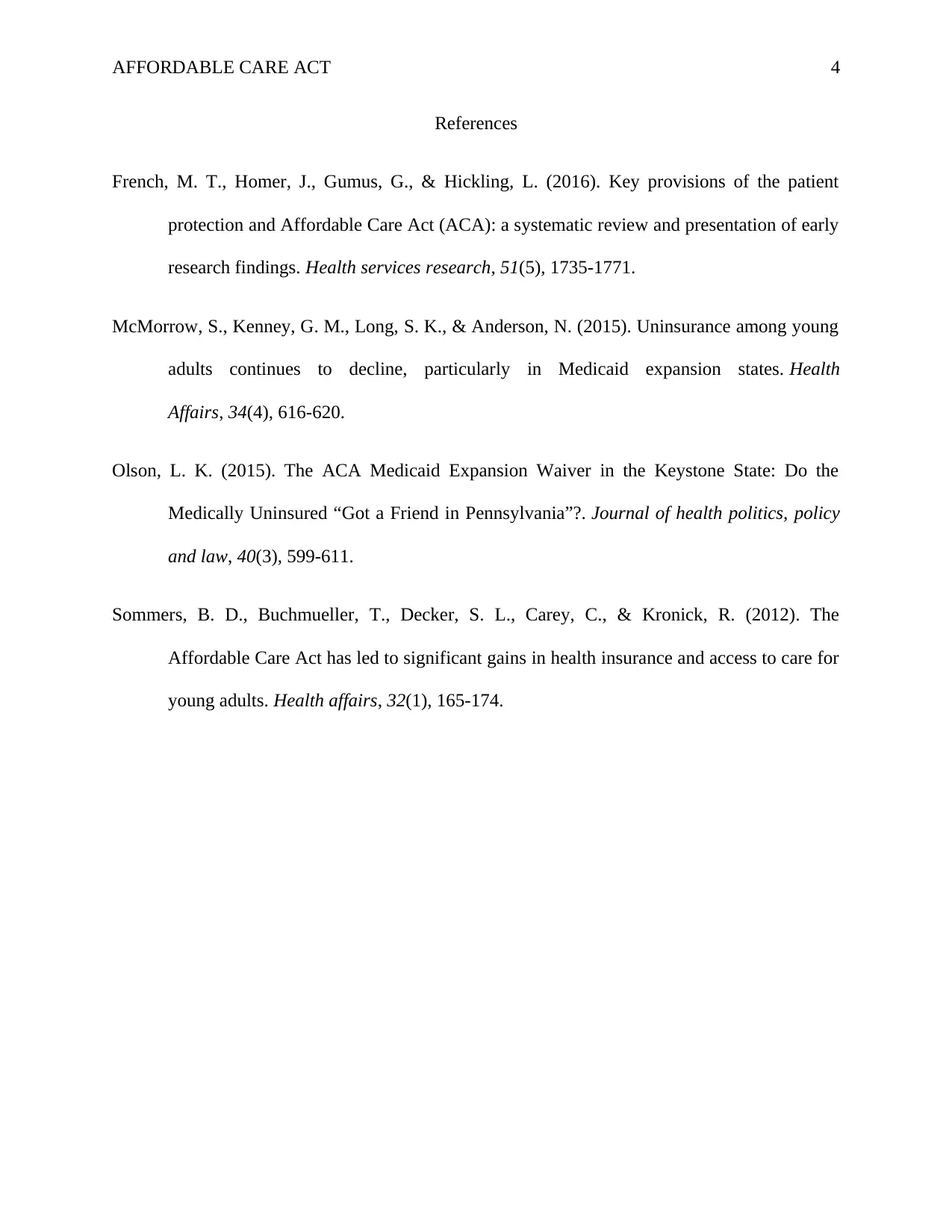ACA Provisions and Their Influence on Public Health Policies
VerifiedAdded on 2023/06/05
|4
|819
|204
Essay
AI Summary
This essay examines the Affordable Care Act (ACA) and its multifaceted impact on public health. It explores the ACA's relationship with key public health pillars such as health policy, public health, care management, and quality and safety. The essay highlights how the ACA has significantly reduced the number of uninsured individuals through various policy changes, particularly focusing on its influence on health insurance coverage, access, and affordability. It delves into the dependent coverage provision allowing young adults to remain on their parents' insurance plans and the implications of Medicaid expansion on coverage, access, and health outcomes. Additionally, the essay incorporates comments on student postings, addressing issues such as access to care for young adults and the complexities of provider participation in public insurance programs. The analysis draws upon several research articles to support its claims, providing a comprehensive overview of the ACA's role in shaping the healthcare landscape.
1 out of 4











![[object Object]](/_next/static/media/star-bottom.7253800d.svg)